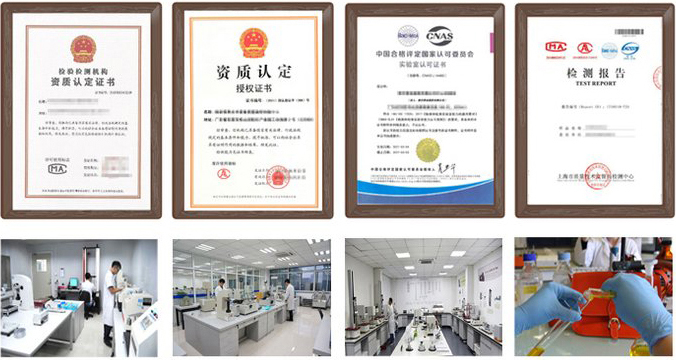

— Services —
 National free customer service telephone 400-101-7153
National free customer service telephone 400-101-7153 email:Service@Baijiantest.Com
phnoe:15601902607
telephnoe:400-101-7153
address:No. 700, Yishan Road, Xuhui District, Shanghai
Textiles & Clothing
Polypropylene fiber is a synthetic fiber spun from isotactic polypropylene obtained from propylene polymerization, and is commonly known as polypropylene fiber...
To get tested, look for Baijian!
consultation hotline :400-101-7153
Mobile/WhatsApp:15601902607test details
Polypropylene and polyacrylonitrile fiber testingHow to apply for a report? What items need to be tested? We will conduct testing and evaluation in strict accordance with the standards. We can also provide personalized testing plans and reports according to your needs.
Polypropylene fiber is a synthetic fiber spun from isotactic polypropylene obtained from propylene polymerization, and is commonly known as polypropylene fiber in China. Polypropylene fibers can be divided into long fibers, short fibers, spunbonded non-woven fabrics, melt blown non-woven fabrics, etc. Polypropylene long fibers can be divided into ordinary long fibers and fine denier long fibers (Monofilament size ≤ 2.2 dtex, can be used for the production of clothing and decoration, as well as some industrial filament products. Polypropylene fine denier long fibers have good luster, soft feel, good drapability, and low density, and are suitable for the knitting industry. When interwoven with cotton, viscose silk, real silk, spandex, etc. to form products such as cotton cover C and silk cover C, it is an ideal material for making high-end sportswear, T-shirts, etc. The production process of polypropylene short fibers mostly adopts porous, low-speed Continuous process, i.e. short spinning process. Polypropylene short fibers mixed with cotton can be made into polypropylene cotton fine cloth and bed sheets, that is, fibers mixed with viscose can be made into blankets, polypropylene pure and mixed yarn, polypropylene blankets, carpets, polypropylene cotton wadding smoke filter nozzles. The thickness of fibers used in sanitary products is 1.5-2.5 dtex, while the thickness of fibers used in ground fabrics is 5-10 dtex. The length of the fiber ranges from 1.5 to 200.0 mm, depending on the purpose of the fiber. The length of short fibers used for concrete is 1.5-200.0 mm, the length used for diapers is generally 40.0 mm, and the length used for ground fabric is 60.0 mm. Spun bonded non-woven fabric, also known as filament non-woven fabric, is made by extrusion spinning, stretching, mesh laying, and bonding of polypropylene raw materials after melting. It has the characteristics of short process, low cost, high productivity, excellent product performance, and wide use. Polypropylene non-woven fabrics are widely used in various fields of production and daily life (such as disposable medical and health products, disposable anti fouling clothing, agricultural fabrics, furniture fabrics, lining in the shoe industry, etc.). The fiber produced by melt blown non-woven fabric technology is very fine (up to 0.25 μ m) Melt blown fabric has a large specific surface area, small pores, and high porosity, so its application characteristics such as filtration, shielding, and oil absorption are difficult for non-woven fabrics produced by other separate processes to possess. Melt blown non-woven fabrics are widely used in fields such as healthcare, thermal insulation materials, and filtration materials
Brief History of Development
In the early stage, propylene polymerization could only obtain paper-based products with low degree of polymerization, which belonged to amorphous compounds and had no practical value.
. In 1954, Ziegler and Natta invented the Ziegler Natta catalyst and made crystalline polypropylene with high stereoregularity, known as isotactic polypropylene or isotactic polypropylene. This research achievement has opened up new directions in the field of polymerization, laying the foundation for the large-scale industrial production of polypropylene and its widespread application in plastic products and fiber production In 1957, the Italian company Montecatini first achieved industrial production of polypropylene. From 1958 to 1960, the company used polypropylene for fiber production and developed a polypropylene fiber called Meraklon, which was later produced in the United States and Canada After 1964, polypropylene film cracking fibers for bundling were developed, and products such as textile fibers and carpet yarns were made from the original fiber of the film In the 1970s, the short range spinning process and equipment improved the production process of polypropylene fibers. During the same period, bulky continuous filaments began to be used in the carpet industry. Currently, 90% of carpet substrates and 25% of carpet veils worldwide are made of polypropylene fibers After 1980, with the development of polypropylene and new technologies for manufacturing polypropylene fibers, especially the invention of metallocene catalysts, the quality of polypropylene resin has been significantly improved. Due to the improvement of its stereoregularity (up to 99.5% isotacticity), the internal quality of polypropylene fibers has been greatly improved. In the mid-1980s, polypropylene fine fibers replaced some cotton fibers for use in textile fabrics and non-woven fabrics. With the development of one-step BCF spinning machines, air texturing machines, and composite spinning machines, as well as the emergence and rapid development of non-woven fabrics, the use of polypropylene fibers in decoration and industrial applications has further expanded. In addition, research and development of polypropylene fibers are also quite active in various countries around the world. The popularization and improvement of differentiated fiber production technology have greatly expanded the application field of polypropylene fibers1. Project bidding: Issue authoritative third-party CMA/CNAS qualification report
2. Online e-commerce platform entry: Quality inspection report recognized by major e-commerce platforms 3. Used as a sales report: issuing legally effective testing reports to make consumers more confident 4. Papers and research: Provide professional personalized testing needs 5. Judicial services: providing scientific, fair, and accurate testing data 6. Industrial problem diagnosis: Verify the troubleshooting and correction of industrial production problems1. Telephone communication and confirmation of requirements
2. Recommend solutions and confirm quotations 3. Mail samples and arrange testing 4. Progress tracking and result feedback 5. Provide reports and after-sales service 6. If urgent or priority processing is required1. The testing industry is fully covered, meeting different testing needs
2. Fully cover the laboratory and allocate localized testing nearby3. Engineers provide one-on-one services to make testing more accurate
4. Free initial testing, with no testing fees charged
5. Self service order delivery for free on-site sampling
6. Short cycle, low cost, and attentive service 7. Possess authoritative qualifications such as CMA, CNAS, CAL, etc 8. The testing report is authoritative and effective, and is generally used in China1、Project bidding: issue authoritative third-party CMA/CNAS qualification report;
2、E-commerce platform entry: quality inspection reports recognized by major e-commerce platforms;
3、Used as sales report: issuing a test report with legal effect to make consumers feel more at ease;
4、Papers and scientific research: providing professional and personalized testing needs;
5、Judicial services: providing scientific, fair and accurate testing data;
6、Industrial problem diagnosis: verifying the troubleshooting and correction of problems in industrial production;
Testing process

Detection advantages

Related Recommendations

Screenshot, WeChat scan QR code
WeChat ID: 15601902607
(Click on WeChat ID, copy and add friends)